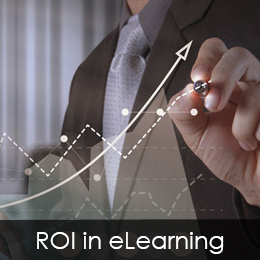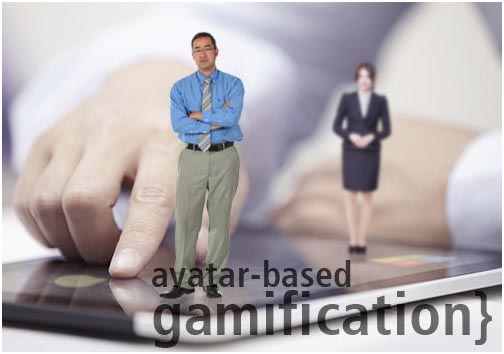
Organizations comprising lifelong learners adapt faster to dynamic exigencies and innovate solutions for previously unrecognized markets. This article explains why learning must be an enterprise priority and outlines ways to build lifelong learners.
What Is Lifelong Learning?
Lifelong learning refers to the continuous, voluntary pursuit of knowledge for personal or professional development. It’s a self-motivated endeavor that extends beyond formal education, encompassing a wide range of experiences and formats. This concept emphasizes the ongoing nature of learning throughout one’s life, recognizing that education does not stop at a certain age or stage. Lifelong learning can take many forms, from formal courses and workshops to self-directed study, and it plays a crucial role in adapting to changing environments and technologies. This approach to learning fosters intellectual flexibility, curiosity, and a readiness to embrace new challenges and opportunities.
The Significance of Lifelong Learning
Lifelong learning is crucial in today’s ever-evolving world. Its significance can be understood through various aspects:
- Professional Advancement: Keeping skills updated is vital in a fast-changing job market. Lifelong learning enables individuals to stay competitive and relevant in their careers.
- Personal Development: It fosters personal growth, enhancing one’s understanding of the world and different cultures, thereby promoting more inclusive and empathetic viewpoints.
- Adaptability: Lifelong learners are better equipped to adapt to new challenges and transitions, whether in their personal lives or professional fields.
- Innovation and Problem-Solving: Continuous learning encourages creativity and innovative thinking, leading to better problem-solving skills.
- Health and Well-being: Engaging in ongoing learning has been linked to improved mental health and well-being, keeping the mind active and engaged.
To sum up, lifelong learning transcends the mere acquisition of skills; it’s a transformative mindset that enriches every facet of an individual’s existence. It sparks a cultural flame of curiosity, adaptability, and perpetual improvement, creating a tapestry where personal and professional growth intertwine.
Why Should Continuous Learning and Development Be a C-suite Priority?
Looking through the lenses of both employers and employees, there exist compelling reasons for the C-Suite to perpetually prioritize L&D.
- For established firms, the ability to learn and adapt to change is at the core of success in business. Otherwise, upstart firms will identify and service formerly unrecognized needs and markets and replace incumbent firms.
- Workforce development is critical to maximize the value and impact of organizational change management efforts. COVID 19 is an example of a black swan event – Black swan events cannot be predicted but still happen. Storms, stumbling economies, social upheaval, earthquakes, pandemics – all are black swan events that are impossible to predict but still happen and upend business as usual. Those who are lifelong learners are more able to quickly recognize changing situations and adapt, experiment, and find success not despite, but because of unforeseen events.
- The proclivity of lifelong learners towards heightened engagement is unmistakable. Organizations that weave learning seamlessly into the fabric of the job not only anticipate but thrive on elevated employee engagement.
- Rich employee development and corporate training is quickly becoming a key differentiator between companies competing for talent. Potential employees want to work for companies that value lifelong learning. Employees report higher satisfaction and workplace happiness when working at organizations with a healthy learning environment.
- In the past, organizations have tried to buy or hire high performers. But the expense of hiring, firing, and recruiting is unsustainable, not to mention the unhealthy culture that develops among employees.
From the employee perspective, it’s clear that individuals desire and need to continue learning new skills, knowledge, and capabilities.
Employees seek out employers who foster a healthy learning environment and support them in their learning efforts.
Employees should ask themselves if they’ll be ready when their opportunity arrives to shine. If they work for an organization that encourages, empowers, and rewards lifelong learners, they’ll easily be able to answer “yes” to that question.
While university and college degrees have merit, lifelong learning is essential to an individual’s professional success and survival. The world continues to change, and learning is the only antidote to quickly evolving economic and technological disruptions.
The Benefits of Lifelong Learning
Lifelong learning offers numerous benefits that extend beyond academic or professional realms. Here’s a summary of key advantages:
-
Enhanced Employability:
It keeps skills up-to-date, making individuals more attractive to employers.
-
Cognitive Health:
Engaging in new learning activities stimulates the brain, potentially reducing the risk of cognitive decline.
-
Increased Adaptability:
Learners can better navigate changes in technology and industry trends.
-
Personal Fulfillment:
It provides a sense of achievement and satisfaction.
-
Improved Quality of Life:
Learning new skills can improve daily life, from personal finance management to understanding technology.
-
Social Connections:
Joining classes or groups fosters social interactions, reducing feelings of isolation.
Lifelong Learning in the Workplace
Implementing lifelong learning in the workplace is key to fostering a culture of continuous improvement and innovation. Here’s how it benefits both employees and organizations:
- Skill Development: Employees can stay current with industry trends and technologies.
- Increased Productivity: Continuous learning leads to more efficient and effective work practices.
- Employee Satisfaction: Opportunities for growth and development improve job satisfaction and retention.
- Innovation and Competitiveness: A workforce committed to learning is more innovative and can better adapt to market changes.
Incorporating lifelong learning into the workplace strategy is essential for maintaining a dynamic, skilled, and motivated workforce.
The Characteristics and Mindset of a Lifelong Learner
Lifelong learners possess distinct characteristics and a specific mindset that sets them apart:
- Curiosity: They have an innate desire to understand and explore new things.
- Self-motivation: Lifelong learners are driven by their personal goals and interests.
- Flexibility: They adapt to new situations and challenges.
- Resilience: They persevere in the face of obstacles and view failures as opportunities to learn.
- Open-mindedness: These individuals are open to new ideas and different perspectives.
This mindset not only fosters continuous learning but also contributes to personal and professional growth.
How Do You Establish a Culture of Lifelong Learning in Your Organization?
Leaders need to listen to how employees talk about learning and time spent on learning activities. Employees talk about how they applied concepts from learning programs, failed, iterated, and tried again. If leaders don’t observe employees talking about what they’ve learned and tried, or if they hear employees using terms like “I don’t have time for that training,” they should be concerned that they have a cultural problem.
To create a culture of lifelong learning, leaders should:
- Make learning an organizational priority– Enterprise strategy and goals should include tactics that emphasize and require learning.
- Demonstrate the value of learning to employees – By recognizing and rewarding those who take advantage of and apply what they learn through training and learning opportunities.
- Provide formal and informal options for employees to learn and grow.
- Create frictionless learning opportunities, many of which occur in the flow of work.
- Invest more formal L&D efforts toward teaching people how to learn. Most employees are used to being spoon-fed information they need for upskilling and top-down process modifications. But employees drive, own their learning, and understand what options for lifelong learning are available and how to leverage them most effectively.
- Create learning paths to help people move closer to their short- and long-term professional aspirations based on organizational skills and future market needs.
- Model learning behaviors and capitalize the development of learning processes and tools.
How Do You Build an Army of Lifelong Learners?
Of the many requirements that make up the promotion process in the US Marines, a required reading list is often highlighted by those inside and those outside the Marines. Jim Mattis, the former leader of the US Marines said that “If you haven’t read hundreds of books, you are functionally illiterate, and you will be incompetent, because your personal experiences alone aren’t broad enough to sustain you.” This instills in the Marines the invaluable attribute of lifelong learning. Beyond the intrinsic value of reading, organizations can harness the following strategies to cultivate a formidable legion of lifelong learners:
- The future of learning is not in the classroom. It’s in discovering ways to do better while doing the work. Organizations need to provide opportunities to learn in the flow of work.
- Provide microlearning options for frequent nudges that build learning habits.
- Reward those who have a bias for action and take calculated risks, learn from their mistakes, and celebrate failure.
- Leaders need to model desired behavior– learn, share what they learned, and visibly participate with others in learning.
- Reward learning– highlight those who complete formal and less-formal training and education programs.
- Build a culture where learning is the default state– not something that requires professional sacrifices.
- Promote informal learning– including self-directed and social learning.
- Make learning interestingand create awareness around training and learning options.
- Change the behavior of the L&D teamto that of the guide on the side.
Example of Lifelong Learning in the Workplace
Meet Maria, a marketing manager in a tech company. Maria’s journey is an excellent example of the lifelong learning mindset in the workplace:
- Continuous Skill Development: Maria regularly attends workshops to stay abreast of the latest digital marketing trends.
- Proactive Learning: She initiated a monthly book club within her department to encourage learning and discussion on relevant topics.
- Learning from Experience: Maria actively seeks feedback on her projects and uses it for improvement.
Maria’s organization supports her learning journey by:
- Personalized Learning Paths: The company offers Maria a personalized learning plan, tailored to her career goals and interests.
- Mentorship Programs: She is paired with a senior leader who provides guidance and shares industry insights.
- In-House Training Sessions: Regular training sessions are conducted, allowing Maria to stay updated with the latest trends.
- Flexible Learning Opportunities:
- Online Courses and Workshops: The company provides access to various online learning platforms.
- Time Allocation for Learning: Maria is given dedicated time during work hours for personal development activities.
- Encouraging Innovation:
- Hackathons and Idea Incubators: Maria participates in internal hackathons, applying her new skills to real-world company challenges.
- Feedback and Recognition: Her efforts in learning and applying new knowledge are recognized and rewarded by the organization.
Maria’s journey serves as a compelling illustration of how organizations, through strategic support and a commitment to learning, can cultivate a culture of lifelong learning. As more individuals like Maria emerge within an organization, the collective force of a lifelong learning army becomes a driving factor for success and adaptability.
Parting Thoughts
In parting, let’s underscore the profound impact of lifelong learners on organizational dynamics. Their ability to adapt swiftly to change, drive incremental and disruptive innovations, and contribute to an anti-fragile business environment positions organizations for sustained success and profitability in the unpredictable landscape of today’s business world.



